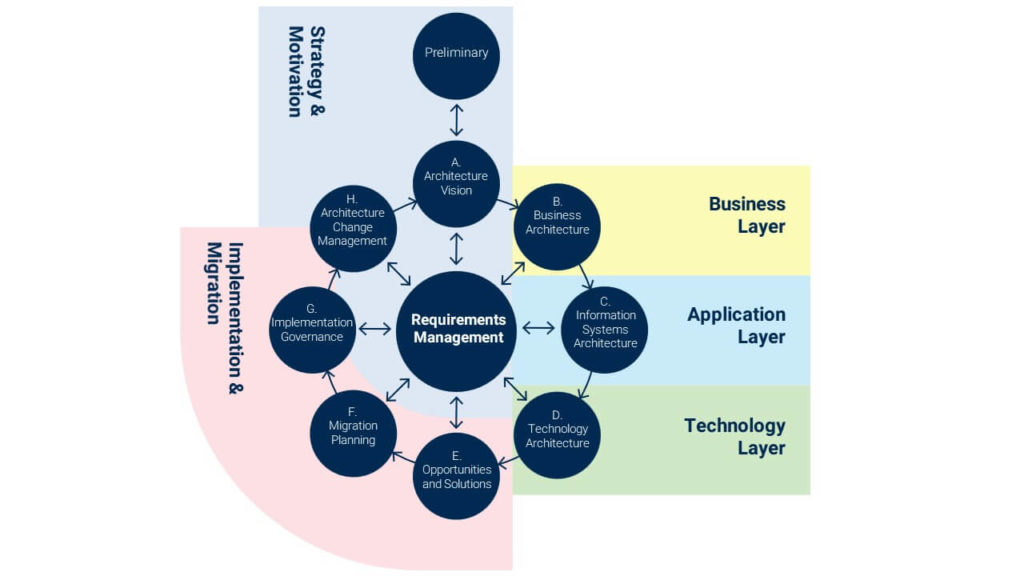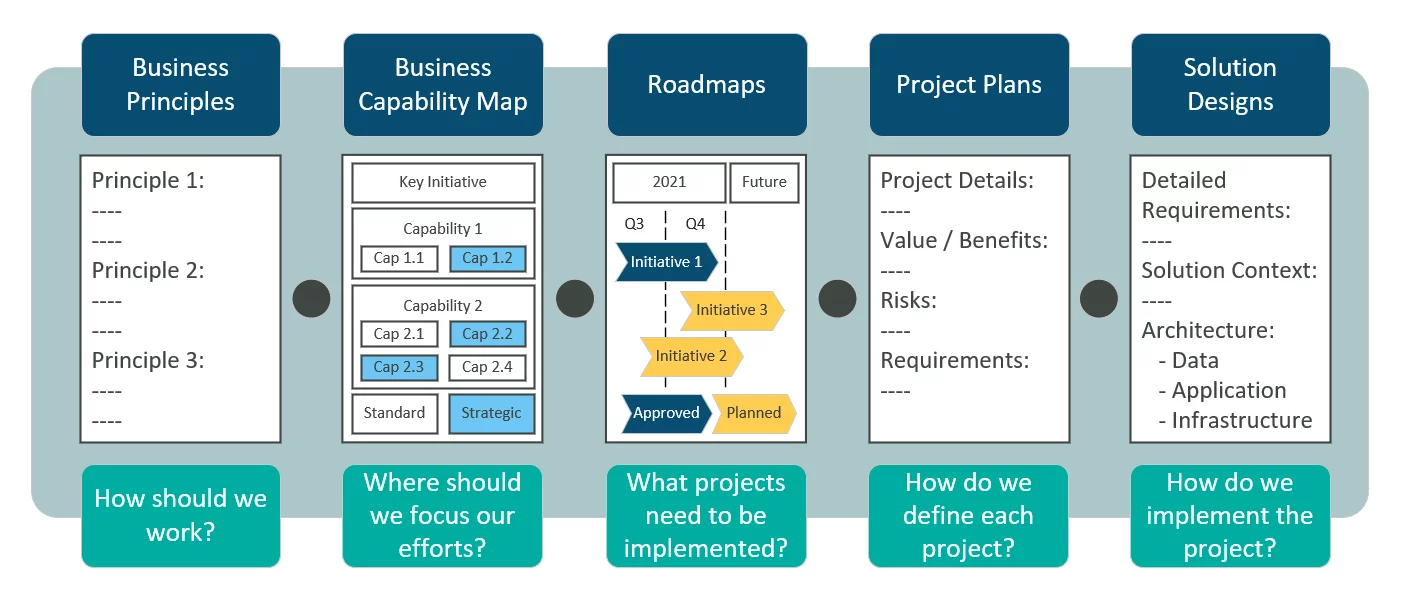Introduction
In today's rapidly changing business landscape, organizations are constantly seeking ways to improve their processes and deliver value to customers more efficiently. One area that has seen significant transformation is solution architecture management. Traditionally, solution architecture was a rigid and time-consuming process, but with the advent of agile methodologies, organizations have been able to streamline their solution architecture management practices and achieve better results.
The Evolution of Enterprise Architecture
Understanding Enterprise Architecture
Enterprise architecture refers to the practice of aligning an organization's business processes, information systems, and technology infrastructure with its strategic goals. It provides a holistic view of an organization's current state and desired future state, enabling effective decision-making and resource allocation.
Traditional Approaches to Enterprise Architecture
In the past, enterprise architecture was mostly executed using traditional waterfall methodologies. This approach involved lengthy planning and documentation phases, often resulting in outdated and inflexible architectures. Changes were difficult to implement, leading to delays and cost overruns.
The Rise of Agile Methodologies
With the rise of agile methodologies in software development, organizations started realizing the benefits of applying agile principles to other areas of their operations. Agile methodologies emphasize iterative development, collaboration, and continuous improvement. These principles can be applied to solution architecture management as well.
Implementing Agile Methodologies in Solution Architecture Management
What is Solution Architecture?
Solution architecture involves designing and implementing an integrated set of solutions that address specific business needs or problems. It focuses on bridging the gap between business requirements and technical implementation by defining the structure, behavior, and integration of various components.
The Benefits of Agile Solution Architecture Management
Implementing agile methodologies in solution architecture management offers several benefits:
Flexibility: Agile approaches allow for more flexibility in adapting to changing business needs and market conditions. Solutions can be developed incrementally, allowing for faster feedback loops and course corrections. Collaboration: Agile methodologies emphasize collaboration between business stakeholders, solution architects, and development teams. This collaborative approach ensures that the solution architecture aligns with business goals and requirements. Faster Time-to-Market: By breaking down complex projects into smaller deliverables, agile methodologies enable faster time-to-market. This enables organizations to respond quickly to market demands and gain a competitive edge. Improved Quality: Agile methodologies promote continuous integration and testing, ensuring that the solution architecture meets quality standards. Early detection of issues allows for timely resolution, reducing the risk of costly rework later in the project. Increased Stakeholder Satisfaction: Agile methodologies prioritize delivering value to customers early and frequently. This leads to increased stakeholder satisfaction as they see tangible results throughout the project lifecycle.Key Principles of Agile Solution Architecture Management
To effectively implement agile methodologies in solution architecture management, organizations should adhere to the following principles:
Iterative Development: Break down complex projects into smaller iterations or sprints, focusing on delivering incremental value at each stage. Cross-Functional Teams: Form multi-disciplinary teams comprising business stakeholders, solution architects, developers, testers, and other relevant roles to foster collaboration. Continuous Feedback: Encourage regular feedback from stakeholders to ensure that the solution architecture meets their needs and expectations. Continuous Integration and Testing: Implement automated testing processes to ensure that each iteration integrates smoothly with existing systems and meets quality standards. Prioritization: Use techniques like user stories, backlog grooming, and prioritization exercises to focus on high-value features and address critical business needs first.Tools for Agile Solution Architecture Management
Several tools are available in the market to facilitate agile solution architecture management. One such tool is More help ServiceNow Application Portfolio Management (APM). ServiceNow APM helps organizations streamline their application portfolio by providing visibility into application dependencies, usage metrics, and business value. It enables solution architects to make informed decisions regarding application rationalization, modernization, and retirement.
FAQs
What is the role of a solution architect? A solution architect is responsible for designing and implementing integrated solutions that address specific business needs or problems. They bridge the gap between business requirements and technical implementation by defining the structure, behavior, and integration of various components.
How does agile solution architecture management differ from traditional approaches? Agile solution architecture management focuses on iterative development, collaboration, and continuous improvement, whereas traditional approaches are more rigid and sequential in nature.
What are some common challenges in implementing agile methodologies in solution architecture management? Some common challenges include resistance to change, lack of stakeholder alignment, and difficulty in balancing agility with architectural integrity.
How can organizations ensure that their solution architecture aligns with business goals? Regular stakeholder engagement, continuous feedback loops, and prioritization exercises can help ensure that the solution architecture aligns with business goals.

What are some key considerations when selecting an enterprise architecture tool? Some key considerations include ease of use, scalability, integration capabilities, reporting functionalities, and vendor support.

What role does ServiceNow Application Portfolio Management (APM) play in agile solution architecture management? ServiceNow APM provides organizations with visibility into their application portfolio, enabling solution architects to make informed decisions regarding application rationalization, modernization, and retirement.
Conclusion
Implementing agile methodologies in solution architecture management can significantly improve an organization's ability to respond to changing business needs and deliver value to customers more efficiently. By embracing the principles of agility and leveraging tools like ServiceNow APM, organizations can streamline their solution architecture practices and achieve better outcomes. As technology continues to evolve at a rapid pace, adopting agile approaches will become increasingly crucial for organizations seeking to stay competitive in the digital age.